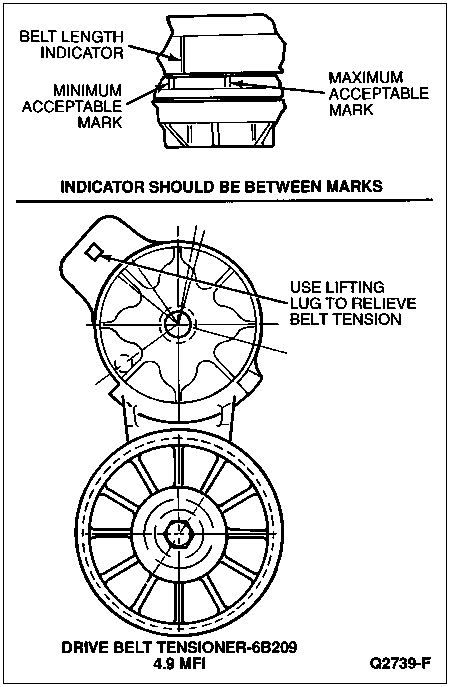
Section 03-05: Drive Belts, Accessory | 1996 F-Series, Bronco Workshop Manual |
Drive Belt Tension
Check drive belt tension. Refer to Drive Belt Tension Adjustment in the Adjustments portion of this section. If tension is not within specification, check drive belt tensioner (6B209). Service components as required.
Drive Belt Tensioner, Automatic
The drive belt tensioner will maintain correct belt tension if the correct length drive belt (8620) is on the engine (6007). To verify that the drive belt tensioner is working properly on the 4.9L, 7.3L and 7.5L engines, check to see that the belt length indicator mark on the drive belt tensioner is between the maximum and minimum marks. The 5.0L and 5.8L drive belt tensioners do not have belt length indicator marks.
Belt Length Indicator, 4.9L SFI

This belt system has a drive belt tensioner that can be improperly installed if the pivot bolt is cross-threaded in the generator mounting bracket (10153) or bent. This can result in an out-of-sheave line condition of the belt idler pulley (8678).
Check that the end of the tensioner spring is looped around the spring stop in the generator mounting bracket and can provide the 60 pound nominal output (±15 percent).
Check that the routing idler bolt is not cross-threaded and is tightened to 47-63 Nm (34-46 lb-ft).
Check that both the drive belt tensioner and belt idler pulley are parallel to each other and the sheave line.
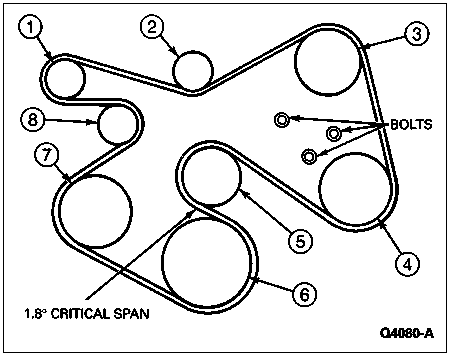
| Item | Part Number | Description |
|---|---|---|
| 1 | 10300 | Generator |
| 2 | 8678 | Belt Idler Pulley |
| 3 | — | Air Conditioner Pulley (Part of 19D629) |
| 4 | 3A733 | Power Steering Pump Pulley |
| 5 | 8509 | Water Pump Pulley |
| 6 | 6312 | Crankshaft Pulley |
| 7 | 9B447 | Secondary Air Injection Pump Pulley |
| 8 | 6B209 | Drive Belt Tensioner |
Belt Length Indicator, 7.5L MFI
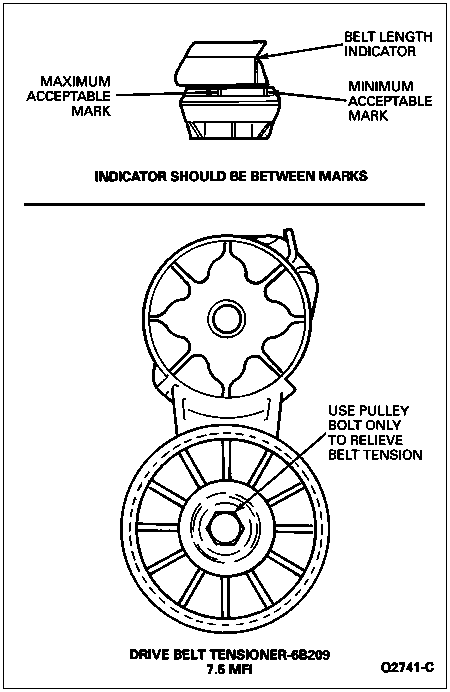
Belt Length Indicator, F-Super Duty Motorhome Chassis, 7.5L MFI
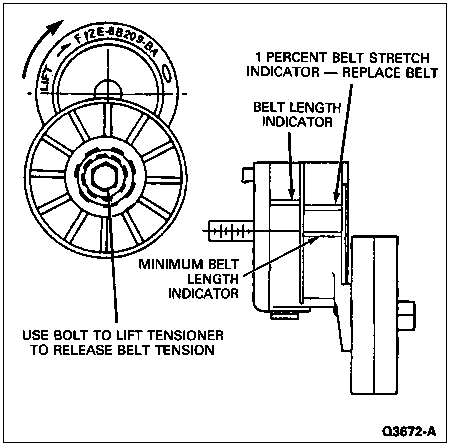
Belt Length Indicator, 7.3L Diesel Engine
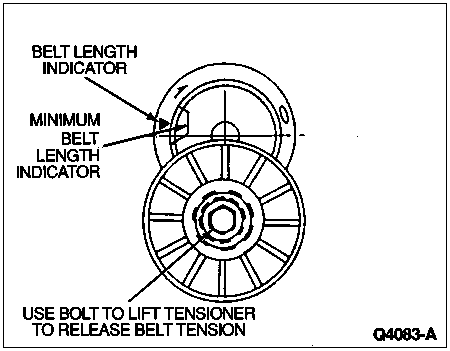
Belt Tension Check
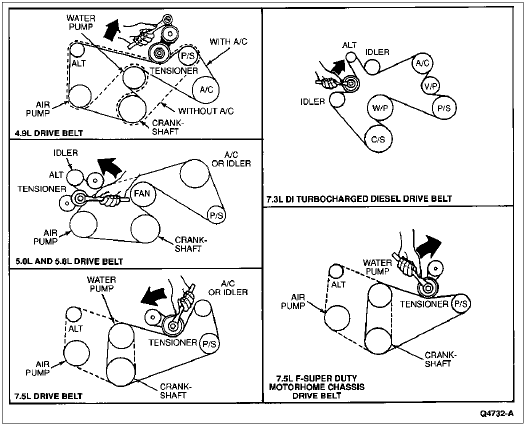
Drive Belt Misalignment
![]() CAUTION: Incorrect drive belt installation will cause excessive drive belt wear and may cause the drive belt to come off the drive pulleys.
CAUTION: Incorrect drive belt installation will cause excessive drive belt wear and may cause the drive belt to come off the drive pulleys.
NOTE: Original equipment drive belts are made of a special cord construction and are subjected to special testing before they are approved for use.
Replacement drive belts, other than O.E.M., may track improperly. If a replacement drive belt tracks improperly, the drive belt should be replaced with an O.E.M. drive belt to avoid performance failure or loss of drive belt during cold operation.
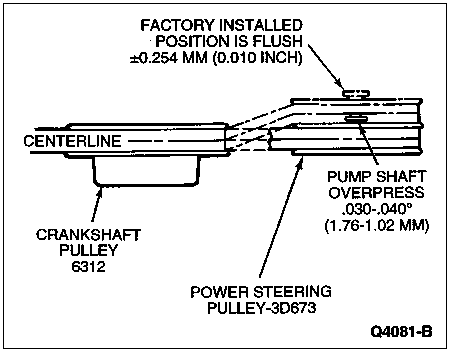
With the engine running, check drive belt tracking (the position of the drive belt on the drive belt tensioner). If the edge of the drive belt rides beyond the edge of the drive belt tensioner, this can cause noise and premature wear. If a drive belt tracking condition exists, visually check the drive belt tensioner for damage, especially the mounting pad surface. If the drive belt tensioner is not installed correctly with the locating pins in the locating holes, the mounting surface pad will be out of position. This will result in drive belt tension and chirp and squeal noises.
If the above procedures do not correct the drive belt noise, try replacing the drive belt with a known good original equipment drive belt. However, the drive belt noise may return again (with mileage) if one of the above conditions still exists uncorrected.